A storm came threw the other night. This presents a problem. All the portlights are in place, but non of them are sealed. I have the forward hatch out and the plastic covering the gaping hole left behind is doing a poor job. Nothing is sealed back in the cockpit either so it basically acts like a giant rain-catch leading straight to the bilge.
I had a roll of black plastic stretched across the entire boat, but the storm shredded it. And when I say storm, I mean the type with straight-line winds that picked up 30lbs wooden pallets and sent them pinwheeling through the air. In fact, one of the pallets flew about 40 feet from where I had it stacked and it hit the back of my truck. It busted out the rear glass and caved in one corner of the cab. That was nice. A little added bonus. The bilge I recently dried out is now wet again...and I got a brand new, custom storm-designed, dent and window removal thrown in for free!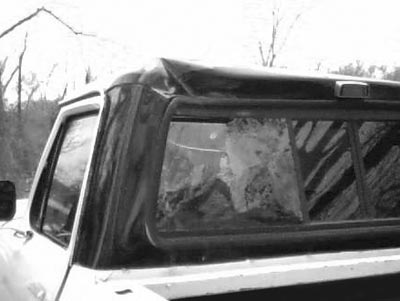
The boat didn't get a lot of water in it (about an inch), but considering I hadn't glassed in the stringer I had just set in place, it got it wet right at the bottom edge of it. I dried everything out again, but I'm still going to give the wood another week to dry completely. The last thing I want to do is permanently epoxy moisture inside the stringer.
In the meantime I went back to work on the galley.
I bought some more plywood, but this time I went with marine grade instead of the MDO. It's more expensive than drugs, but I think it's worth it. The guy that sold me the MDO convinced me it was every bit as good as marine grade, only less expensive. He said the MDO was made of the same wood as marine grade, used the same laminating glue and had no core voids. I gave it a shot, but when I cut into it, guess what I found? Core voids. Granted, they were small and there weren't very many of them, but they still existed. I was not happy with that. I returned a sheet of 3/4 inch MDO and bought 3/4 inch marine grade instead. It's $82 a sheet, which is expensive, but in reality, it's only $20 a sheet more than the MDO. I would just as soon spend the extra twenty bucks and have the peace of mind knowing I didn't cut corners.
I got the rotted plywood out that covered the icebox and replaced it with a new piece. I used a sheet of cardboard and a box knife to cut a pattern for the piece I needed to replace and then transferred that to a sheet of 1/2 plywood.
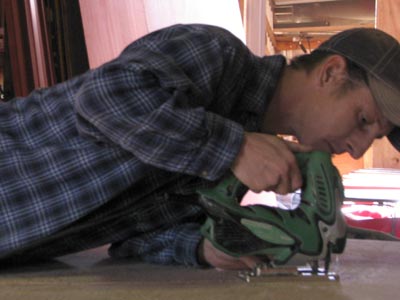
Once I got the piece cut, I took it to the boat and made some final adjustments with the belt sander and test fit it until I got it in place.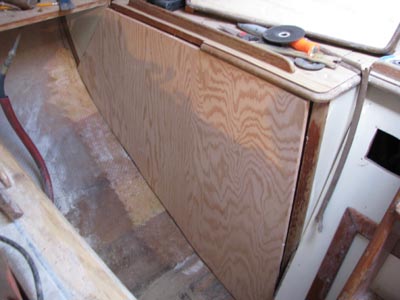
Once I was happy with the fit, I drilled pilot holes and countersinks for the screws and got it set up the way I wanted it.
With the new piece ready to install, I painted all the edges and the entire back side of the piece with epoxy to seal it. I also mixed up some more epoxy and added a little filler to thicken it up and then painted that on the tabbing that held the old piece in place. I laid it on pretty thick and installed the new piece while the back and sides were still wet so they would adhere to whatever they touched on the back side.
With the new piece glued, screwed and epoxied in place, I fiberglassed the butt joint and tabbed the whole thing in place. Personally I think it looks pretty good and I don't think it's going anywhere. It's also sealed on 6 sided with epoxy which is a much better than what came out of it.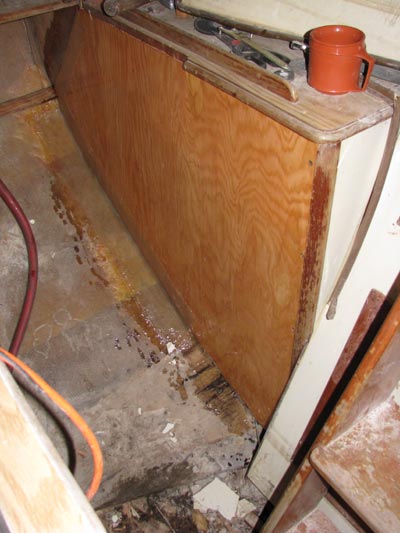
While the epoxy was setting up on the icebox panel, I switched gears and rebuilt the cabinetry that covers the hull below and behind the stove. Fortunately that stuff, though suffering from some rot, stayed pretty much intact when I took it out. That meant I could use the original pieces as patterns for the new ones. The hard part was recreating the quarter round molding without the use of a table saw. I have to rewire the switch on the table saw, so I had to create the molding on the router table.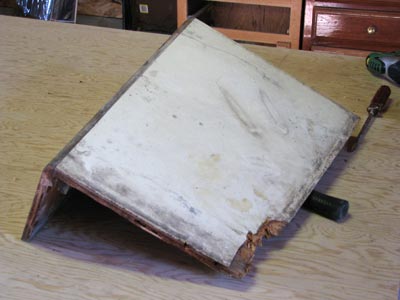
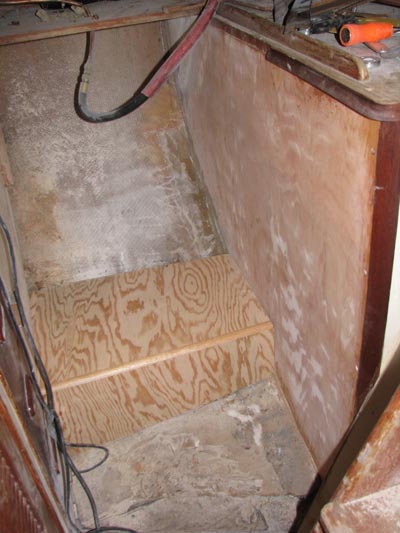

I thought about several ways of putting a finish on the plywood. Obviously, I could cover it in resin, sand it flat and paint it or I could go a head and cover it with a laminate. The paint would be easier, I think, but it would also be a maintenance headache. I'm afraid I would be constantly repainting it and touching up scratches. I'm going to look at my options later today and see what I come up with.
After today, I can tell you one thing for sure. There isn't a square or straight edge in the boat. Everything is a tailored fit of compound angles and beveled arcs.
Monday, April 14, 2008
The Battle of the Bilge
Subscribe to:
Post Comments (Atom)

No comments:
Post a Comment